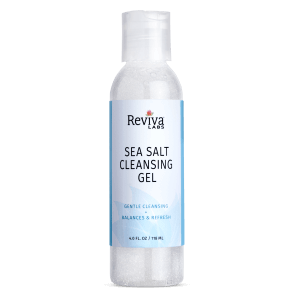Winter has a reputation for turning even the softest hands into dry, cracked, and uncomfortable skin. Studies show that low humidity levels during colder months can reduce skin moisture by up to 25%, making proper care essential for healthy hands. The good news? You don’t need to resign yourself to rough, dry skin until spring. With a few thoughtful strategies and the right products, you can maintain soft, hydrated hands throughout the harshest winter days.
Why Winter Wreaks Havoc on Your Hands
Cold weather isn’t the only culprit behind dry, uncomfortable hands. Indoor heating systems, while necessary, create an arid environment that strips moisture from your skin. Combine this with frequent handwashing, a key step in preventing illness during flu season, and you’ve got a recipe for dehydration.
The skin on your hands is particularly vulnerable because it has fewer oil glands than other areas of the body. Without sufficient natural oils to lock in moisture, the skin barrier weakens, leading to increased water loss and heightened sensitivity. Add wind exposure to the mix, and it’s no wonder your hands feel perpetually chapped.
Adopt a Routine, Not Just a Product
Keeping your hands moisturized isn’t about applying cream once and hoping for the best. It’s about creating a consistent, mindful routine that protects your skin from moisture loss while replenishing what’s been stripped away.
Start by identifying your triggers. Does your skin feel tight after washing dishes? Do you notice redness after being outside? Pay attention to these signs and adjust your habits accordingly. A thoughtful skincare routine doesn’t just fix problems—it prevents them from occurring in the first place.
The Right Way to Wash Your Hands
Proper handwashing is essential for hygiene, but it’s also one of the fastest ways to dehydrate your skin. To minimize damage:
- Use lukewarm water instead of hot. While hot water feels comforting on chilly days, it strips away natural oils, leaving your skin vulnerable.
- Choose a gentle, sulfate-free hand wash with added moisturizers. Harsh soaps can disrupt your skin barrier, so look for products that contain hydrating ingredients like glycerin or aloe vera.
- Pat your hands dry with a soft towel rather than rubbing them vigorously. Friction can irritate dry skin, worsening discomfort.
Immediately after washing, apply a hand cream while your skin is still damp. This helps seal in water and creates a protective layer against environmental stressors.
Reviva’s Ultra Rich Ultra Light Daytime Moisturizer is the perfect addition to your skincare routine during the winter. For your face, hands, and anywhere skin is dry!
The Science of Hydration
Not all moisturizers are created equal, and understanding the key ingredients can make all the difference. Look for products containing:
- Humectants like glycerin, hyaluronic acid, or urea. These attract water to the skin and are especially effective in combating winter dryness.
- Occlusives such as petrolatum or shea butter. These form a protective barrier on the skin, preventing water loss.
- Emollients like ceramides or fatty acids. These smooth and soften the skin by filling in cracks and improving overall texture.
Layering these types of ingredients ensures your hands stay hydrated longer. Apply a humectant-rich product first, followed by an occlusive cream to lock in moisture.
Gloves Are Your Winter Allies
When it comes to protecting your hands, gloves are non-negotiable. Wear insulated gloves whenever you’re outside to shield your skin from cold air and wind. For household chores involving water, like dishwashing, invest in rubber gloves to prevent exposure to drying detergents.
For an extra boost of hydration, consider overnight glove treatments. Apply a thick layer of hand cream before bed and wear cotton gloves to trap moisture as you sleep. This technique helps repair damage and leaves your skin feeling remarkably soft by morning.
Stay Hydrated from Within
While topical treatments are crucial, internal hydration plays a significant role in maintaining healthy skin. During winter, it’s easy to forget to drink water when you’re not sweating, but your skin needs hydration year-round. Aim for at least eight glasses of water a day, and incorporate water-rich foods like cucumbers, oranges, and leafy greens into your diet.
Essential fatty acids, found in foods like salmon, walnuts, and flaxseeds, can also enhance your skin’s natural barrier, helping it retain moisture more effectively.
Address Persistent Dryness
If your hands are persistently dry despite your best efforts, consider using a hydrating mask or treatment once a week. These intensive products often contain higher concentrations of nourishing ingredients designed to penetrate deeply into the skin.
Look for hand masks containing ceramides or collagen to improve elasticity and strength. You can also create a DIY version using natural oils like coconut or almond oil. Simply massage the oil into your hands, cover them with gloves or plastic wrap, and let it sit for 20-30 minutes.

The Role of SPF
It’s easy to overlook sunscreen in the winter, but UV rays can still damage your skin even on cloudy days. Apply a broad-spectrum sunscreen to your hands daily, especially if you’ll be outside for extended periods. Many hand creams now include SPF, offering both hydration and sun protection in one convenient product.
Small Changes, Big Impact
Incorporating these practices into your daily routine doesn’t just keep your hands soft—it improves their overall health. Start with small, manageable changes, like switching to a gentler soap or wearing gloves more often and build from there.
Winter may be harsh, but your hands don’t have to suffer. With the right care, you can enjoy smooth, hydrated skin no matter how cold it gets outside.










